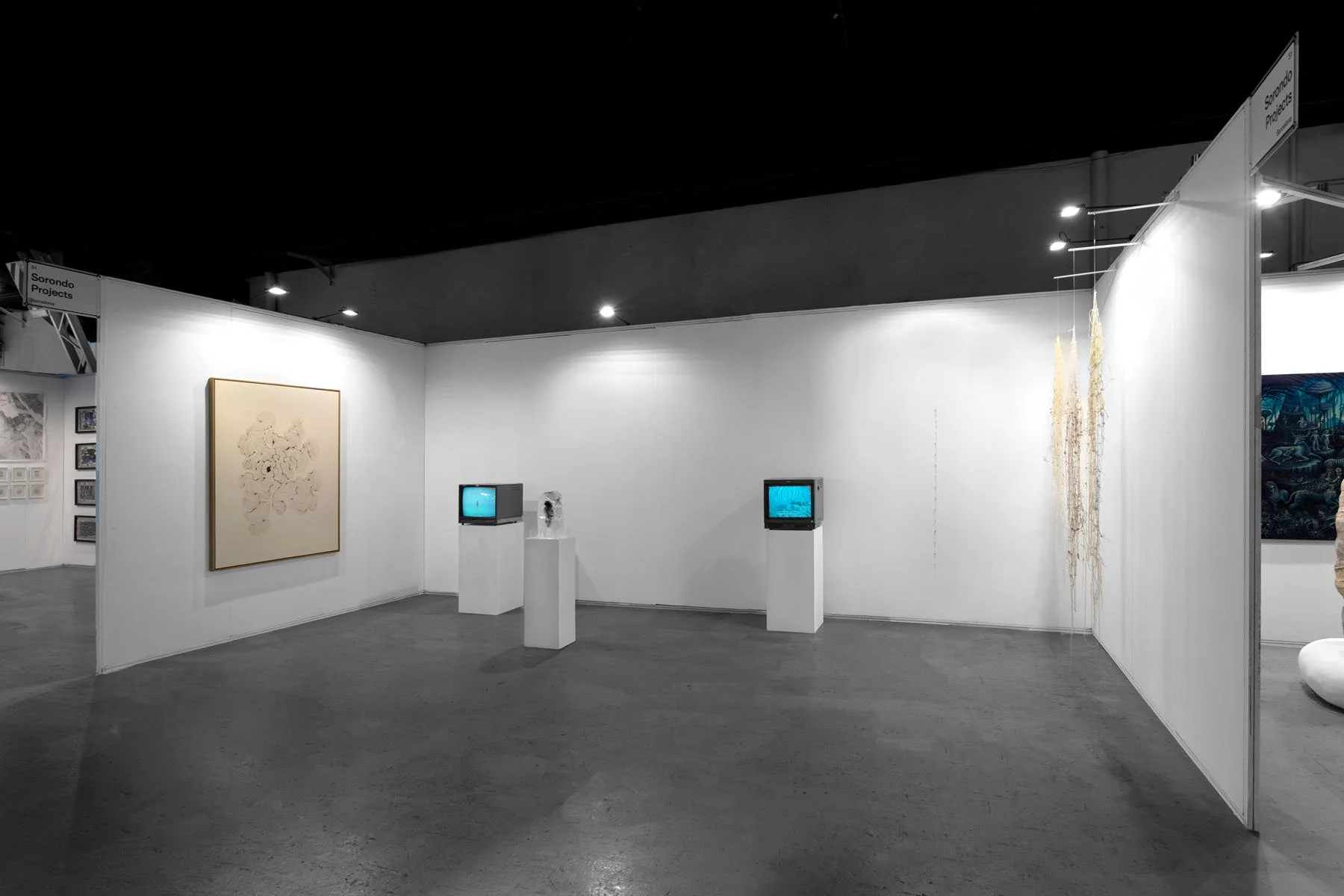
ARTE BA 2025
Antonela Aiassa and María Elena Pombo
28- 30 august 2025
La Memoria de la tierra
ARTE BA 2025 | Booth presentation with Antonela Aiassa and María Elena Pombo.
What does the land remember? What does it hold in its waters in its minerals in its sedimented layers of time? Can it miss what once inhabited it? Can it speak to us even when we have not lived it only imagined it?
This exhibition begins with a simple yet radical premise. Territory is not only a physical support or a symbol of identity but a matter that remembers. The land is seen as a living archive as a porous surface where absences, gestures and bonds are inscribed.
Throughout Latin America territory has historically been a space of reverie but also of dispute appropriation and displacement. From before colonization to the present it has functioned as a resource as a border as a stage and as a body. Thinking of the land not only as landscape but as memory allows us to unsettle linear origin stories and to open space for other forms of belonging. These forms may be unstable hybrid or interrupted but they are equally valid.
In this shift from seeing the land as background to recognizing it as an interlocutor a contemporary sensitivity is activated. This sensitivity does not seek to fix identities but rather to ask what kinds of relations are still possible.
The works gathered here explore possible forms of connection through distance transit or imagination. Acknowledging that memory is not always inherited or continuous allows us to inhabit it differently. Some memories are transmitted without being lived. There are languages that whisper through objects pigments or textures and senses of rootedness that are built through gesture rather than lineage.
The Memory of the Land brings together the practices of María Elena Pombo and Antonela Aiassa. These two Latin American artists come from different territories and work with different materials but they share a common concern. They both ask how to relate to something that cannot be fully possessed. In their work matter does not represent. It acts. And the ancestral does not appear as a certainty but as an open question.
María Elena Pombo from Caracas born in 1988 presents the new series Tejiendo la Anemoia. It is composed of three sculptures made with water and sandstone collected in Venezuela during her return in 2023 after eight years of absence. The journey passed through territories that had long inhabited her imagination including places like Angel Falls and Auyán Tepui and unfolded in dialogue with members of the Pemón community. The collected materials were transformed into algae-based threads using techniques derived from molecular gastronomy which the artist has reappropriated through biotextile practices. The result is a contemporary alchemy where matter becomes woven memory.
Each sculpture acts as a ritual of reconnection between body and territory between intimacy and the unknown between lived and projected memory. The installation includes a documentary video with footage from the journey and interviews along with a series of small syringe-shaped containers that preserve the materials in their original state. This physical archive serves as a visual glossary of the technical process and also as testimony to a memory that does not seek completeness but contact.
The series connects to her earlier work Tejiendo la Morriña which centered on the landscapes of her childhood. Morriña is a Galician word that refers to territorial longing in the language of Pombo’s paternal grandparents. If that earlier series spoke through bodily memory Tejiendo la Anemoia draws from imagined memory. It is a longing for a place never lived but still calling.
Antonela Aiassa from Buenos Aires born in 1988 presents El núcleo de lo múltiple an installation that explores cycles of transformation the fragility of matter and shifts in identity. At the center of the work a block of ice encases a core of natural pigment extracted in collaboration with Liliana Pastrana an artisan with whom Aiassa has built a sustained and ethical relationship. The pigment comes from Tafí del Valle an ancestral and deeply symbolic territory within the landscape of northwestern Argentina.
As the ice melts the pigment is gradually released creating ephemeral and unpredictable forms as if memory itself emerged drop by drop. The installation also includes a painting on cotton dyed with organic pigments that evokes an expanded droplet and a video documenting the melting process allowing the work to persist even after its transformation.
Drawing inspiration from Taoist philosophy the liquid modernity of Zygmunt Bauman and the idea of identity as a project proposed by Anthony Giddens Aiassa turns time into mutable matter. The ice speaks to impermanence. The pigment speaks to essence. Both materials come from landscapes with which the artist has no direct connection but instead a symbolic one. These are internal territories projected onto real matter. Her questions are not who am I but rather what am I remembering what am I letting go what am I becoming now.
The Memory of the Land offers a shared terrain where two practices intertwine without force. In both cases sculpture becomes a porous language where the geological and the emotional the ancestral and the contemporary coexist without resolution. Here the land does not recognize boundaries. It insists. It flows. It murmurs.
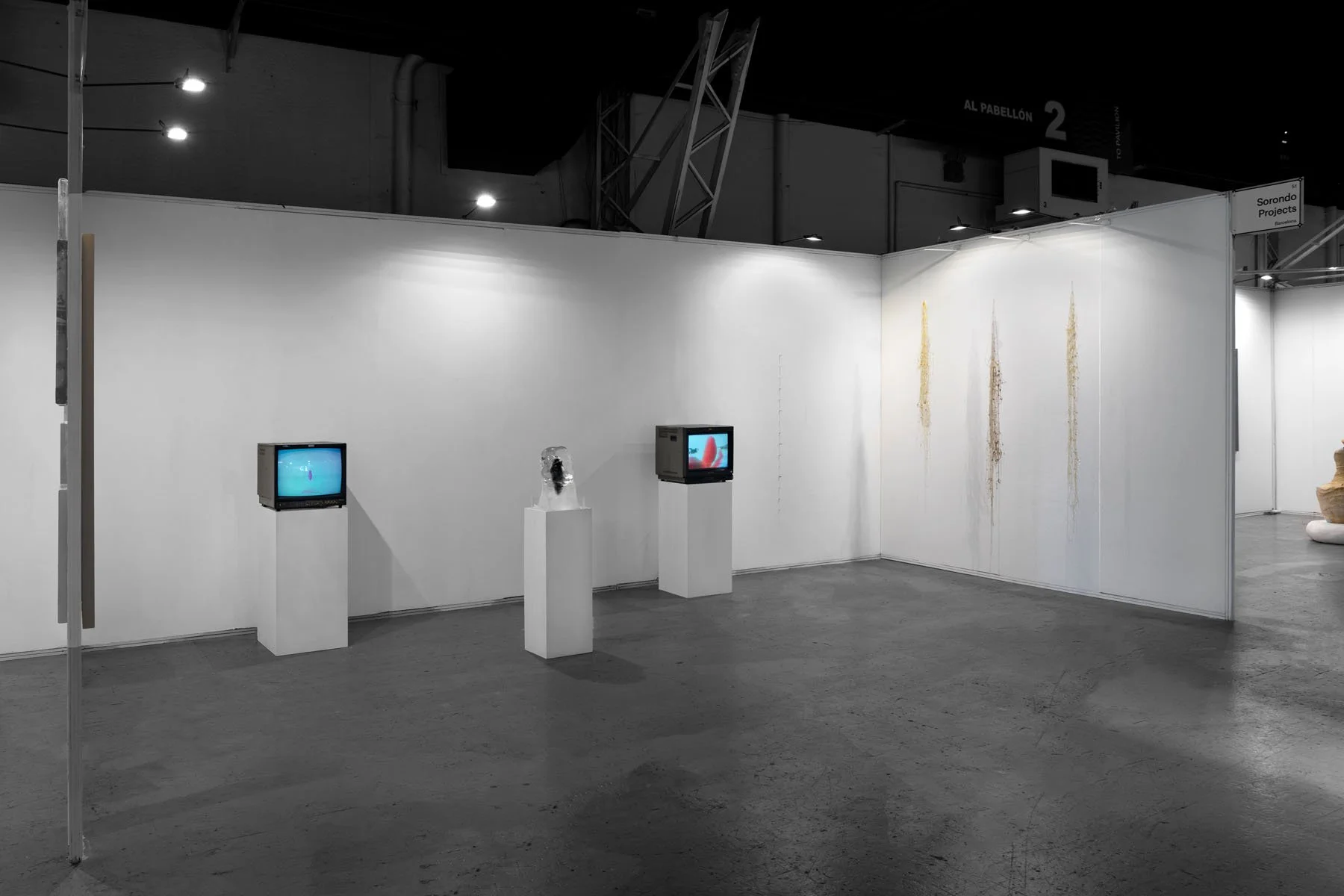
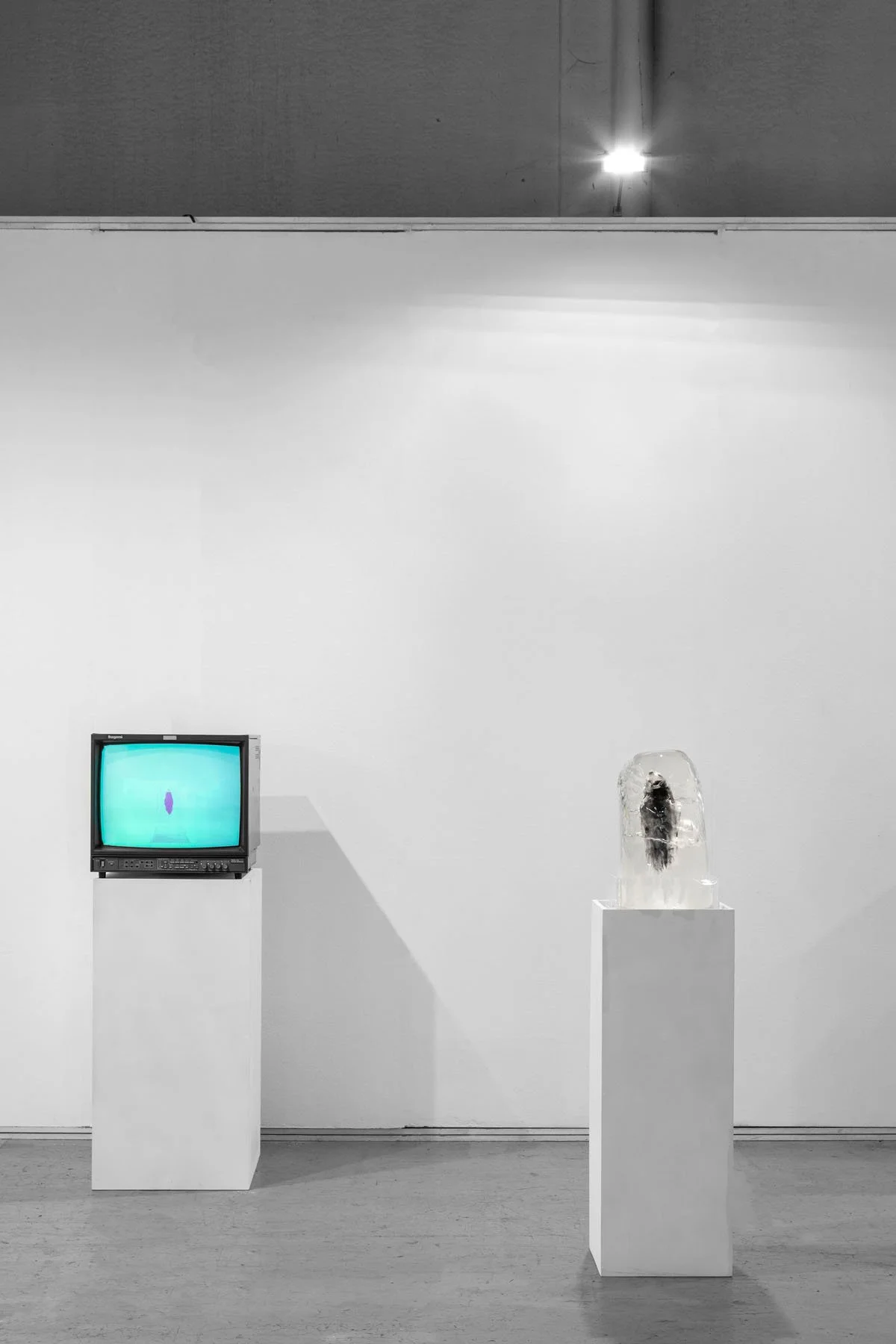

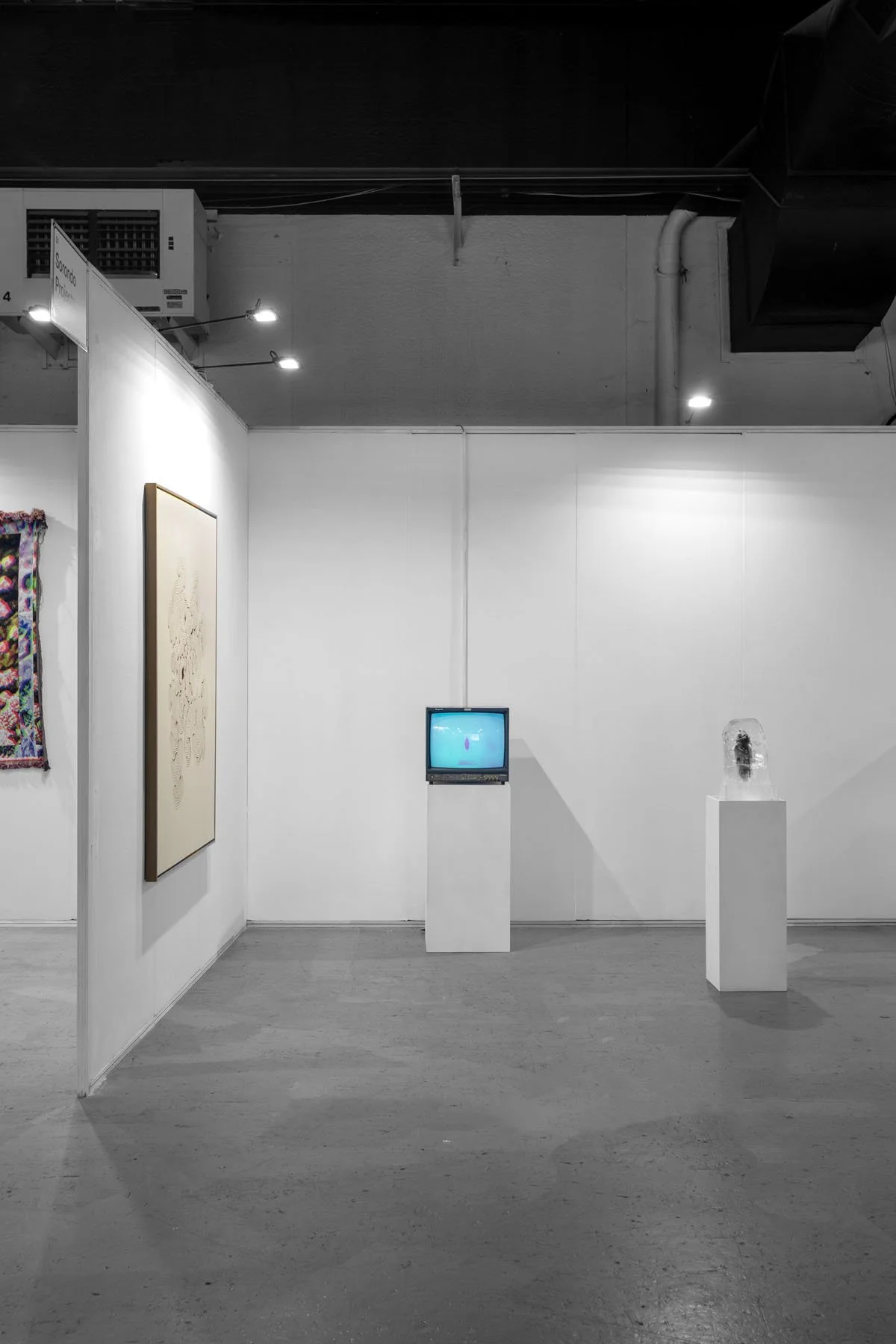
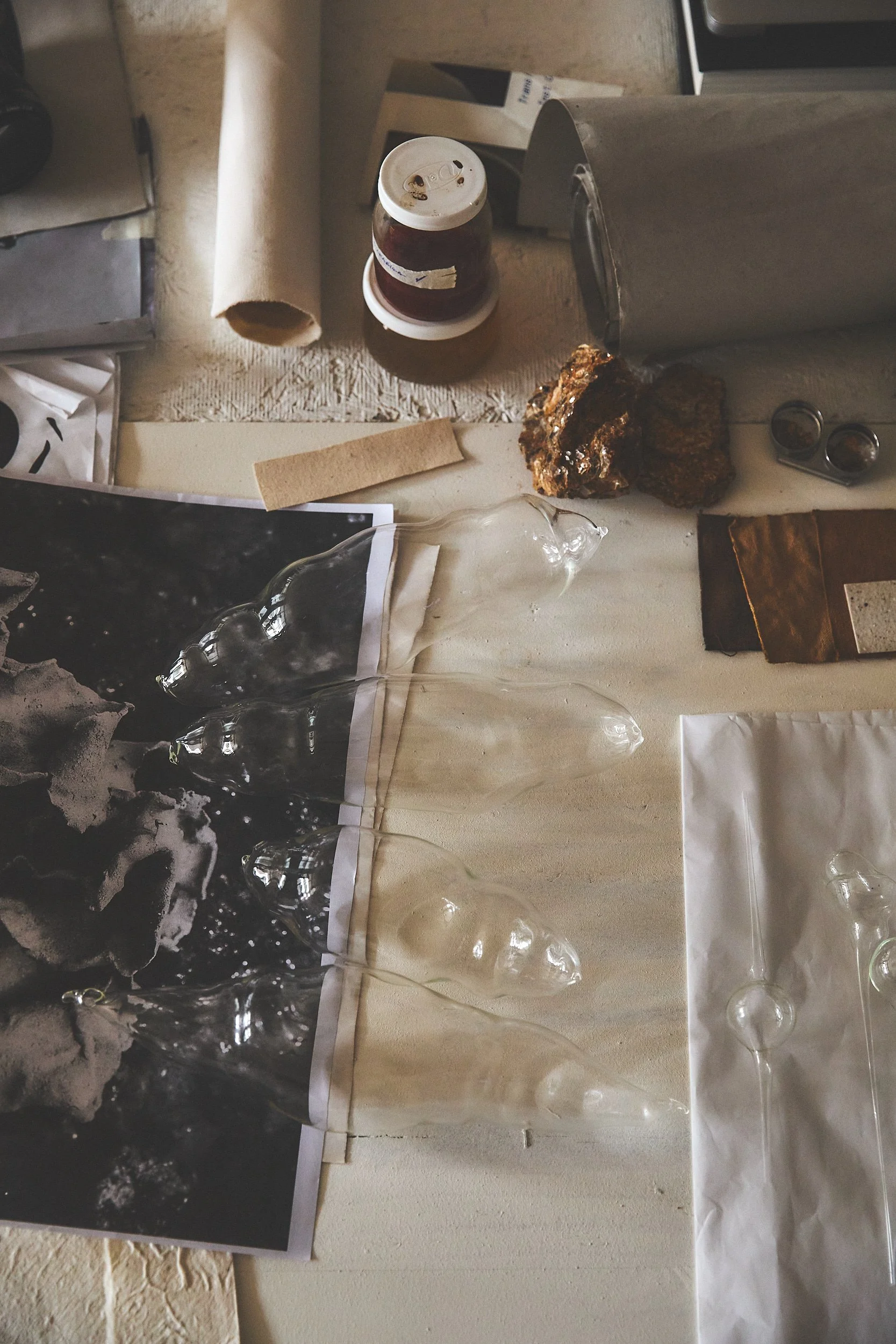
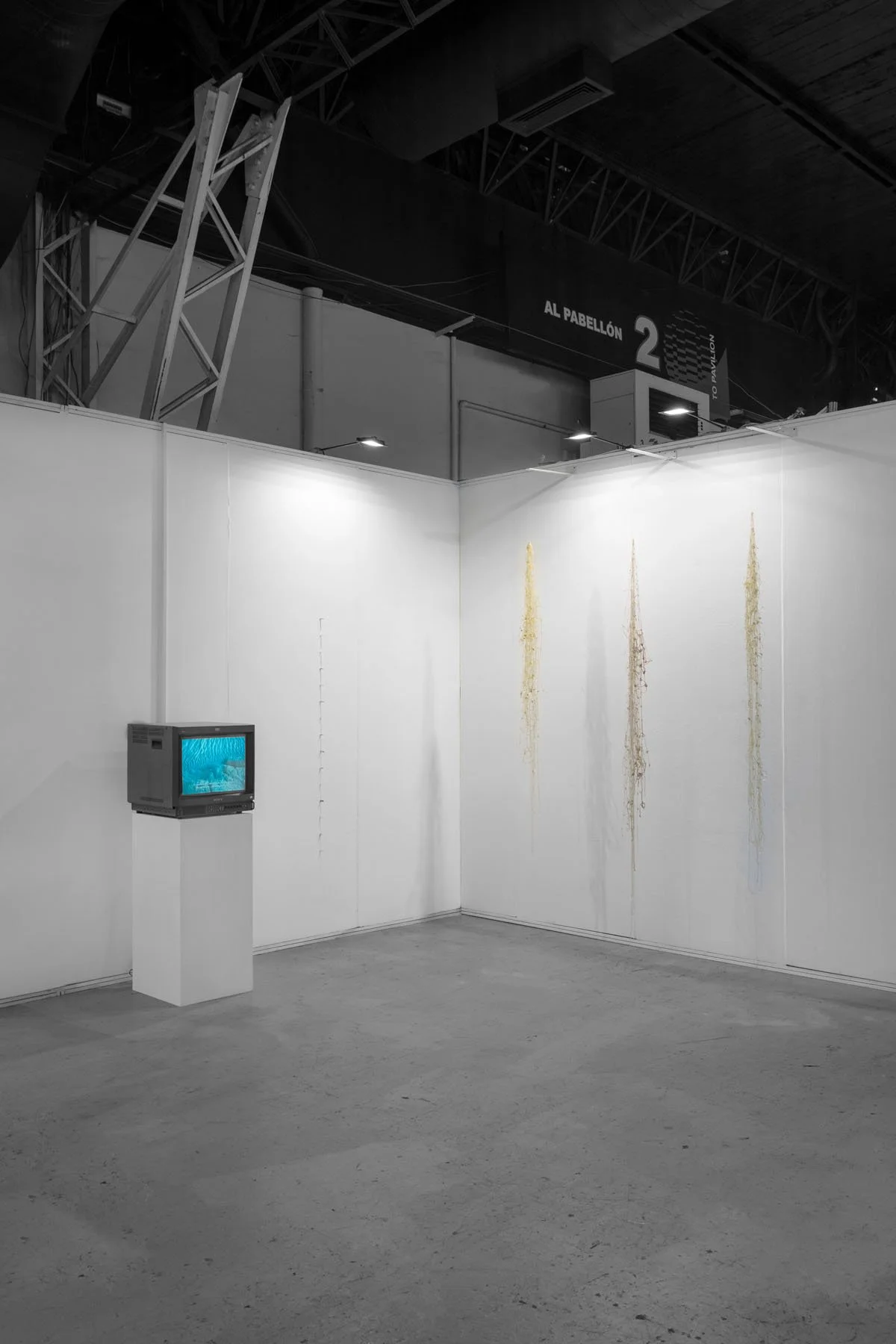
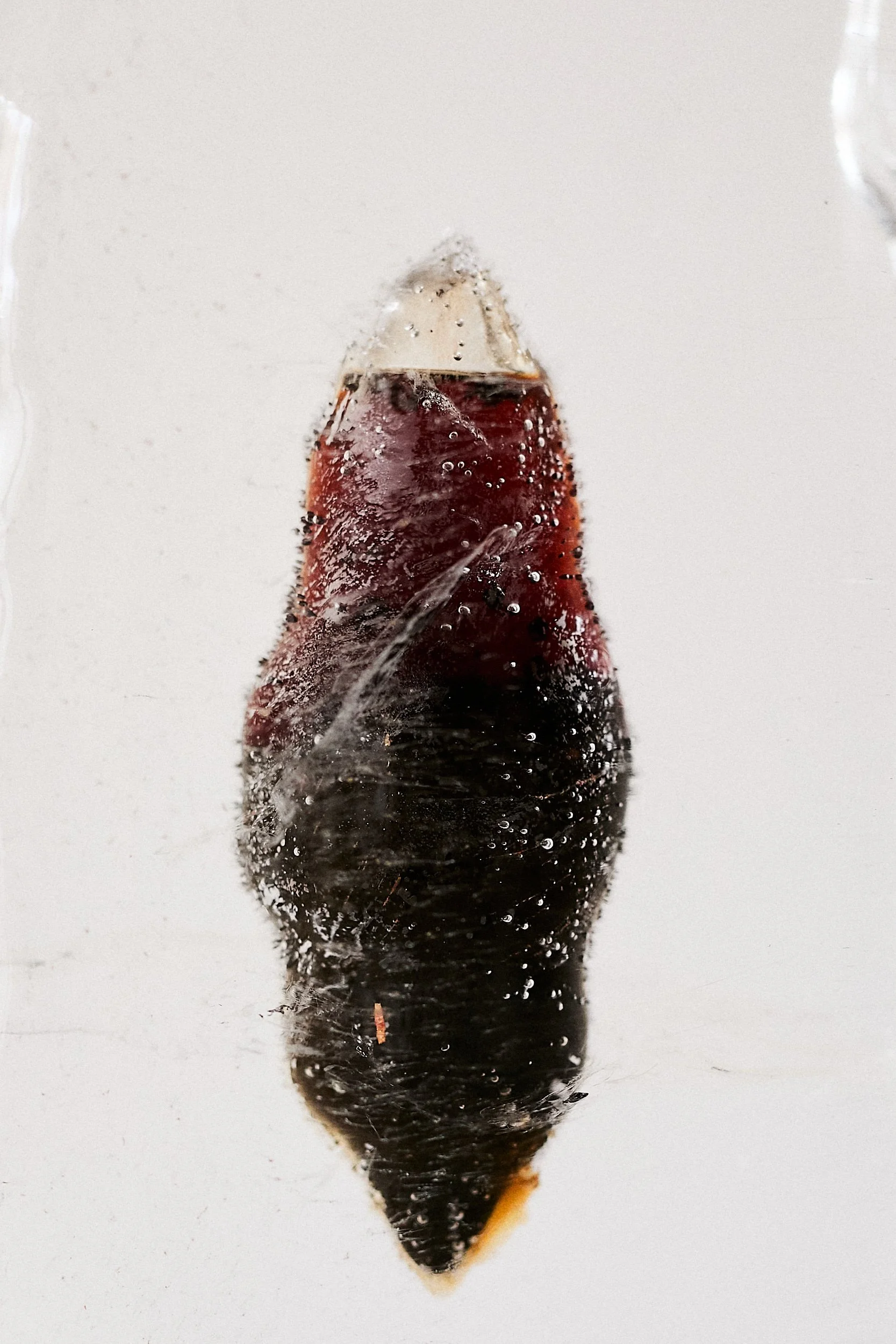
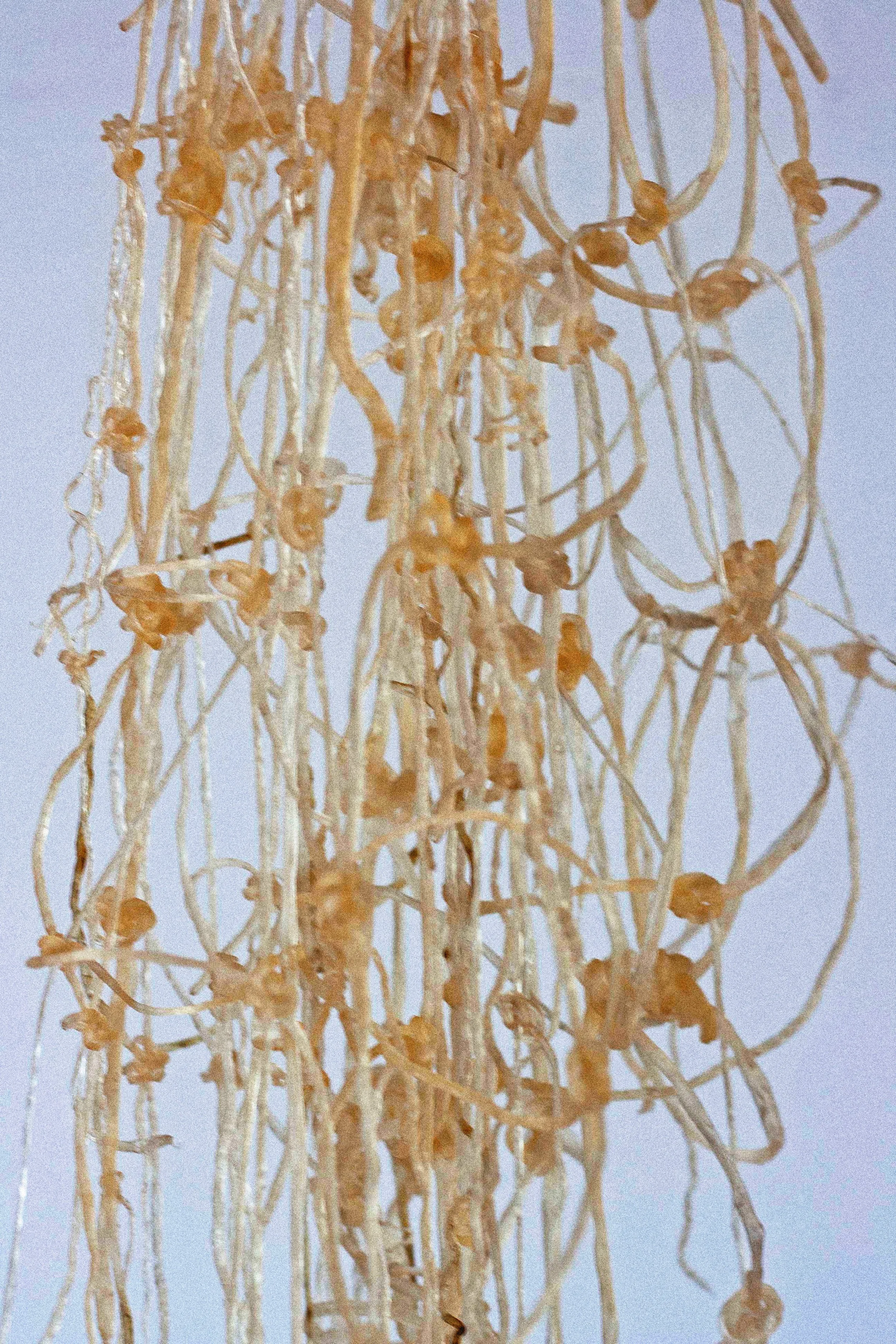


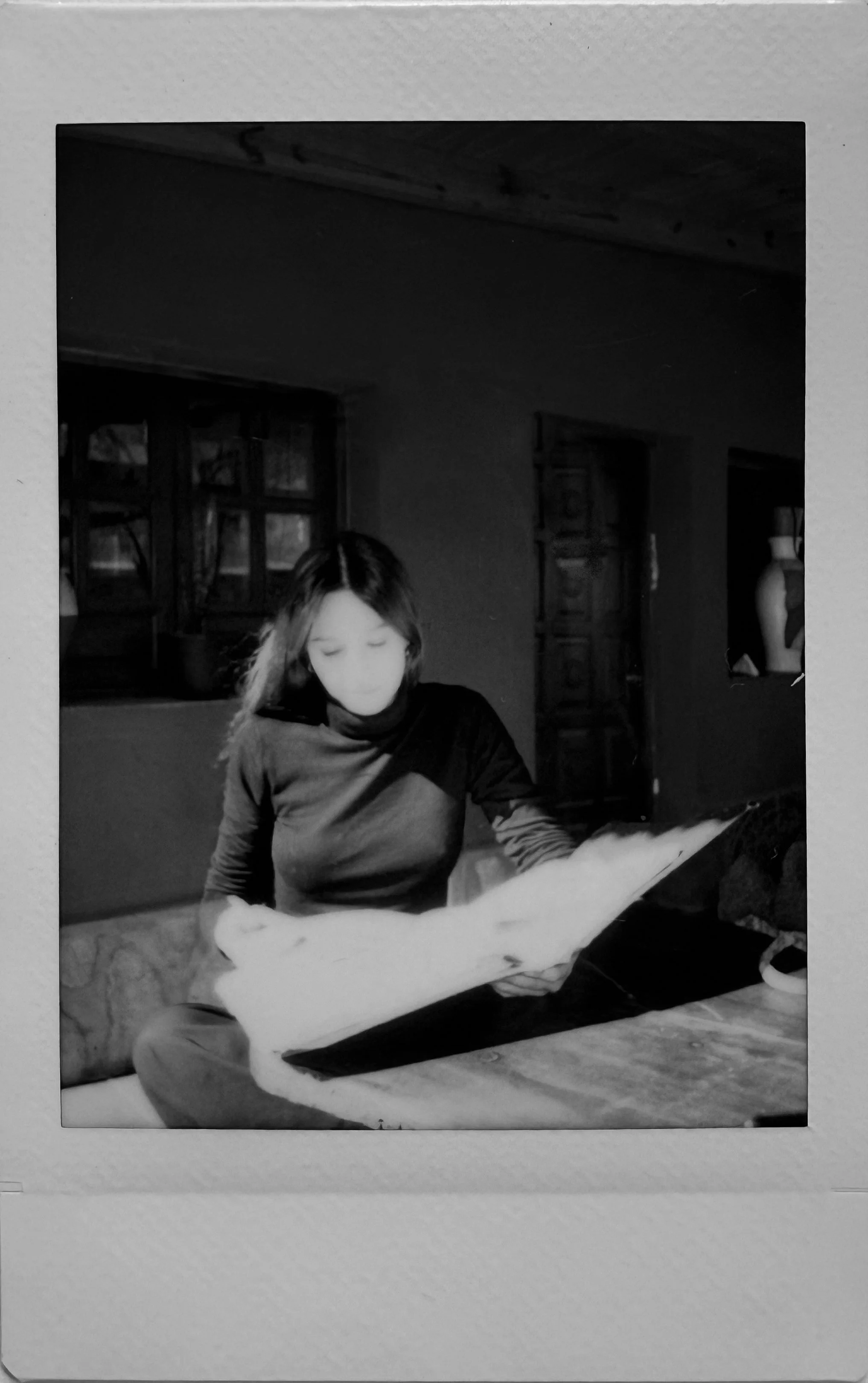
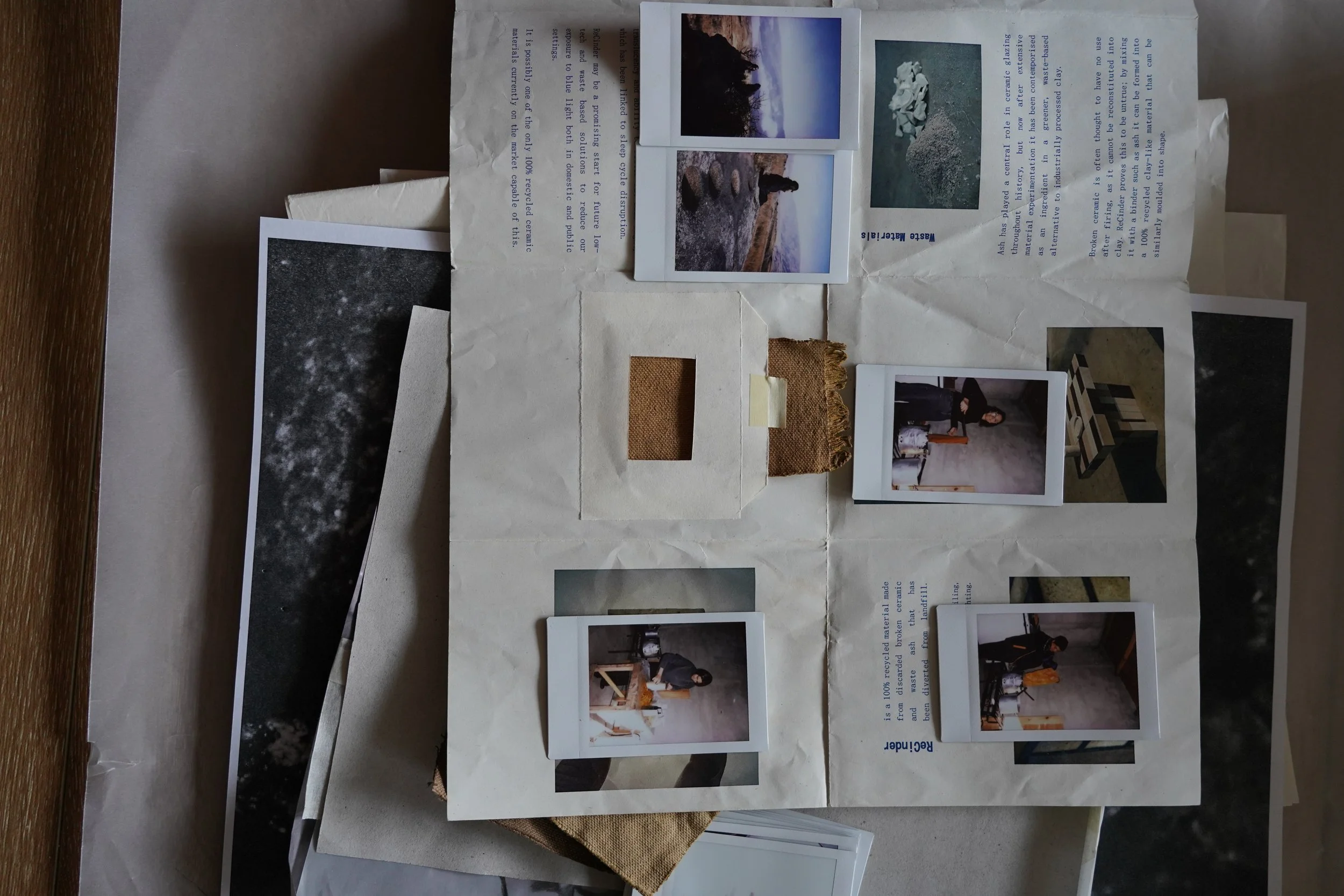


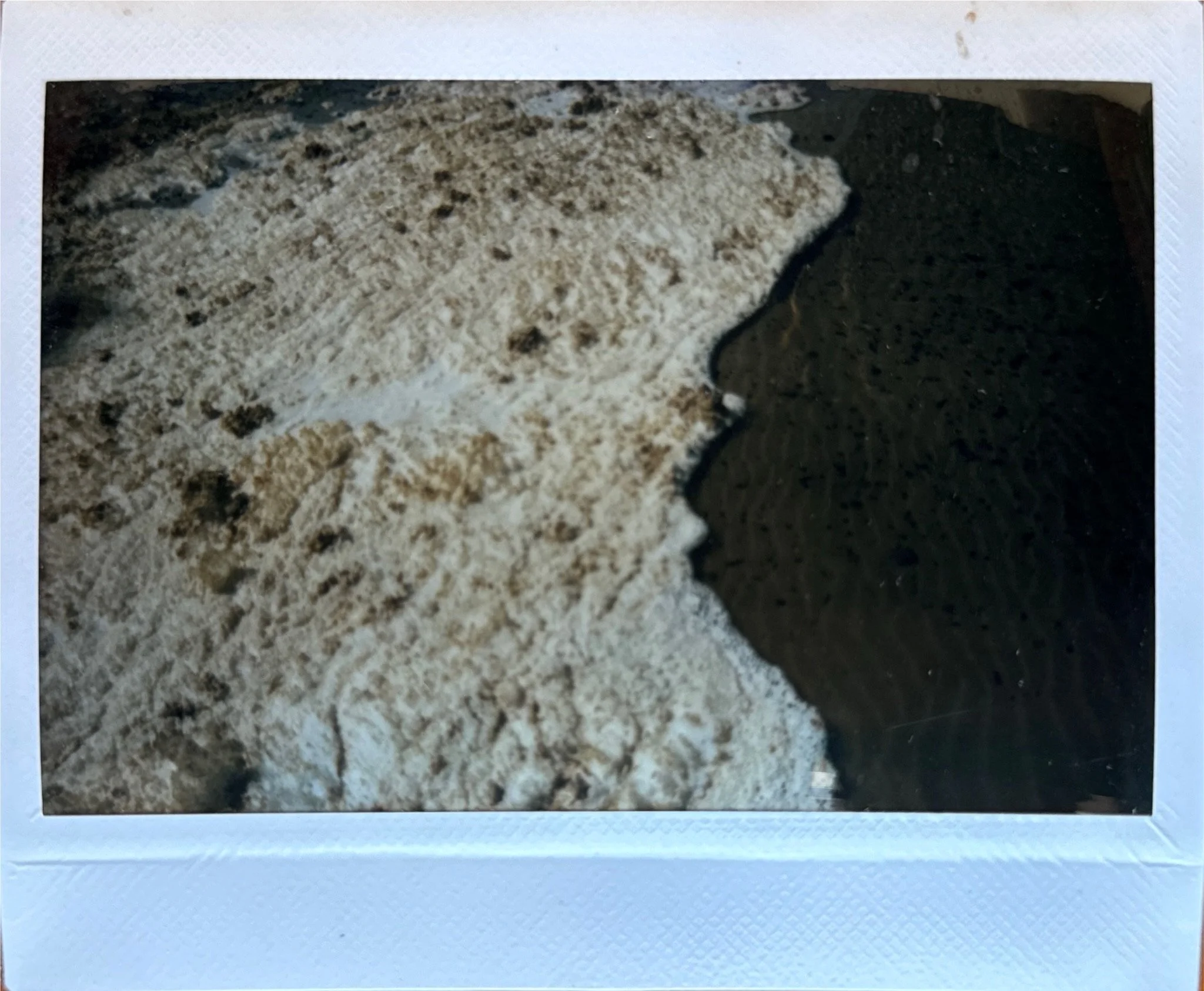
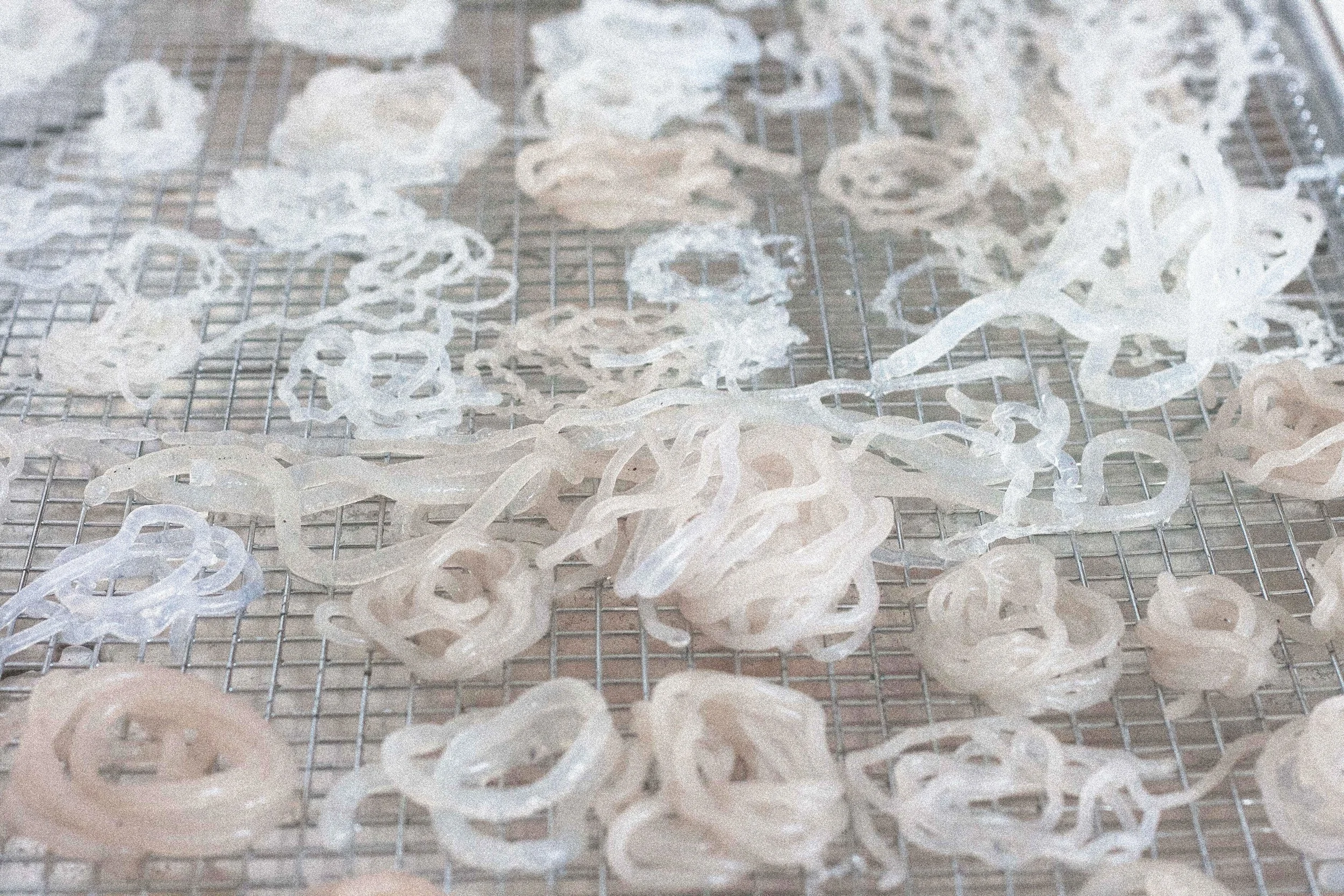
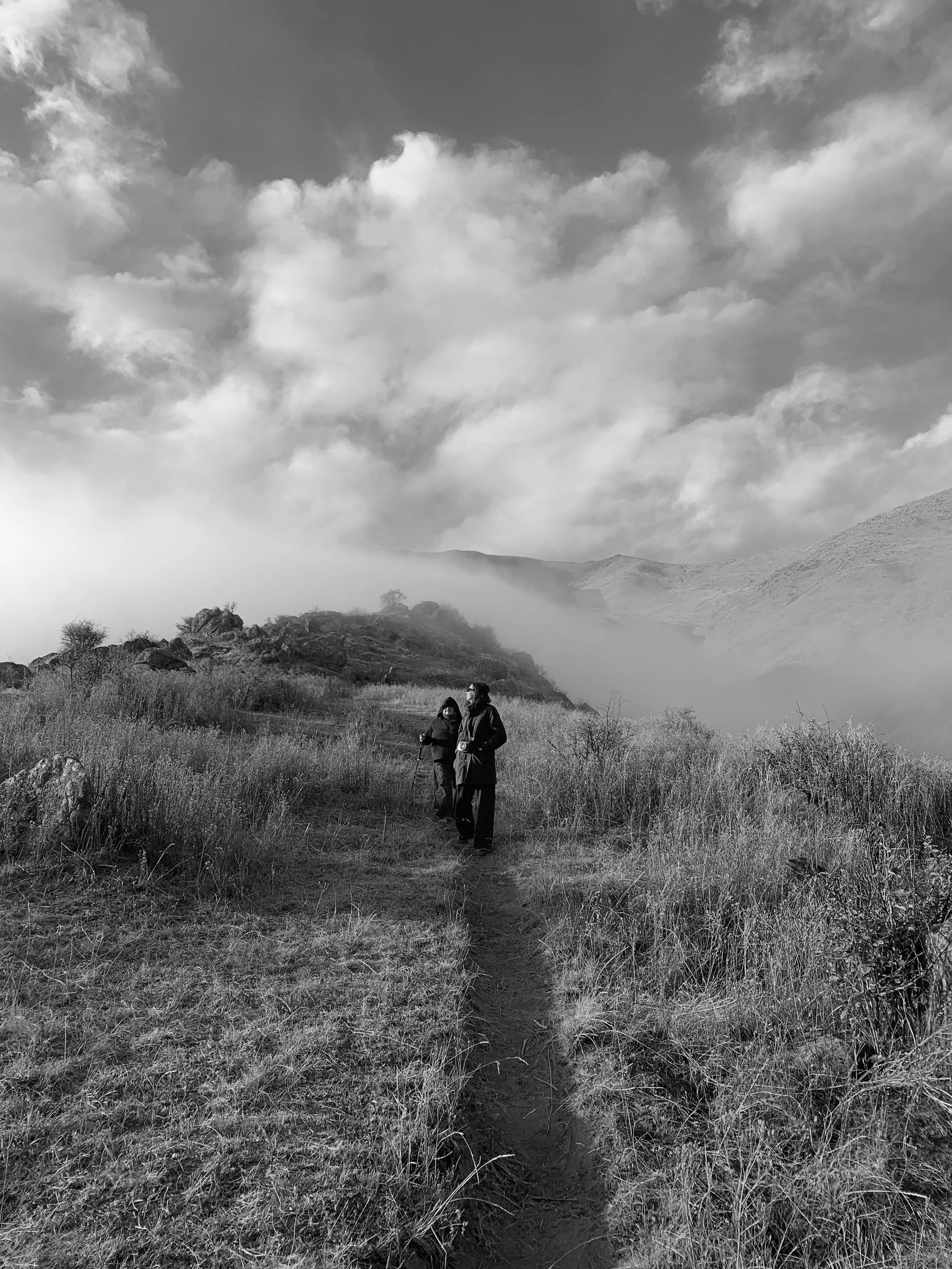
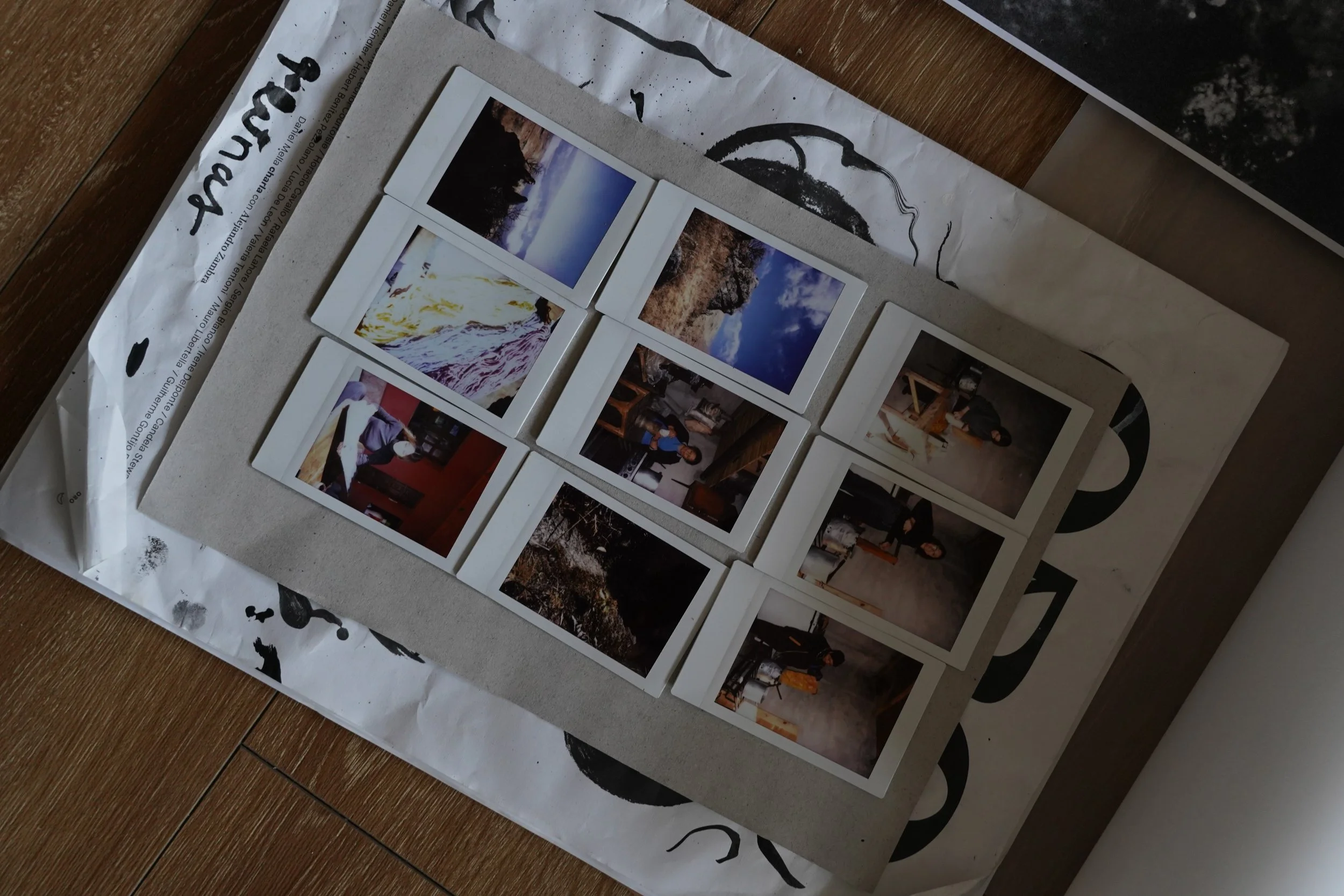
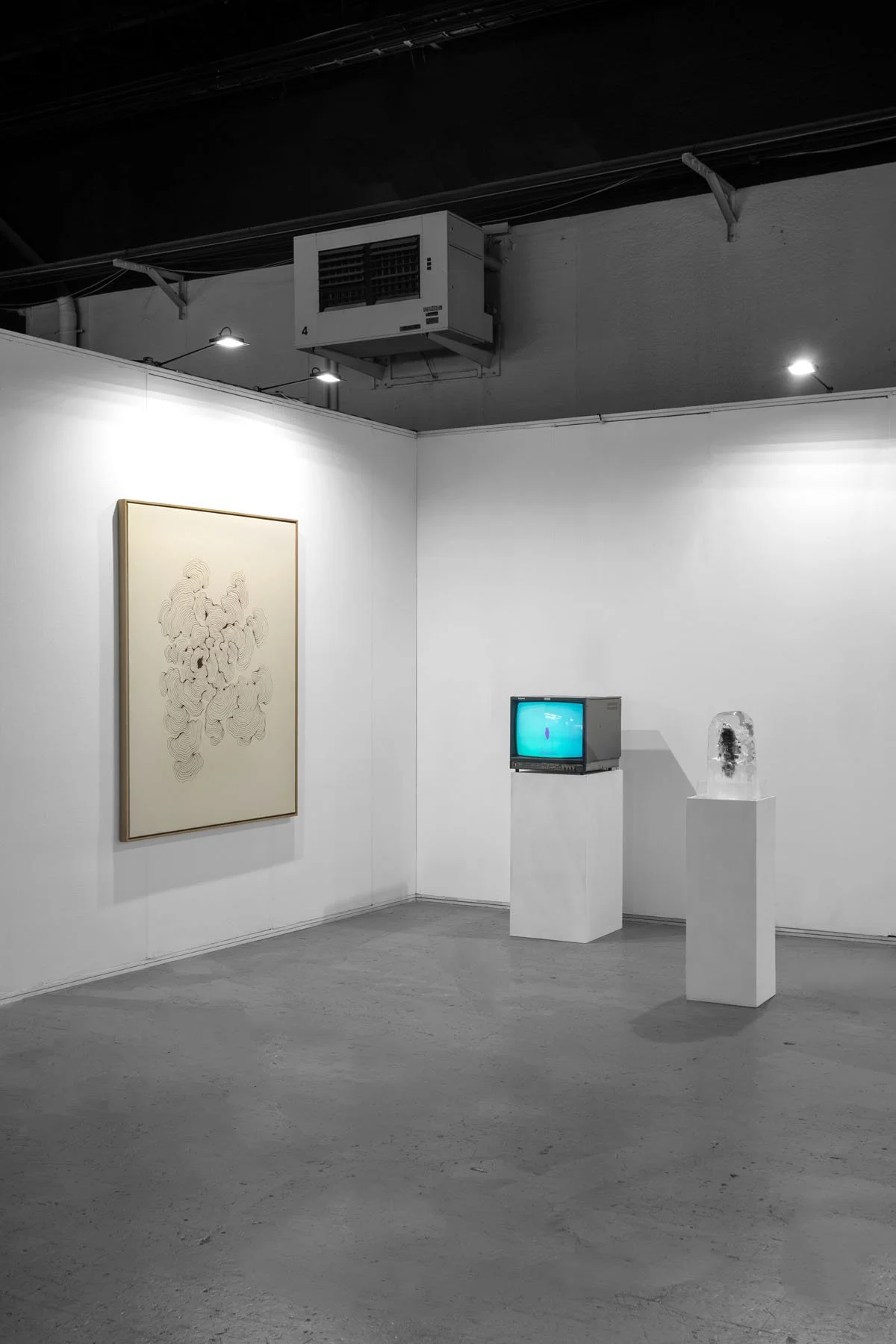
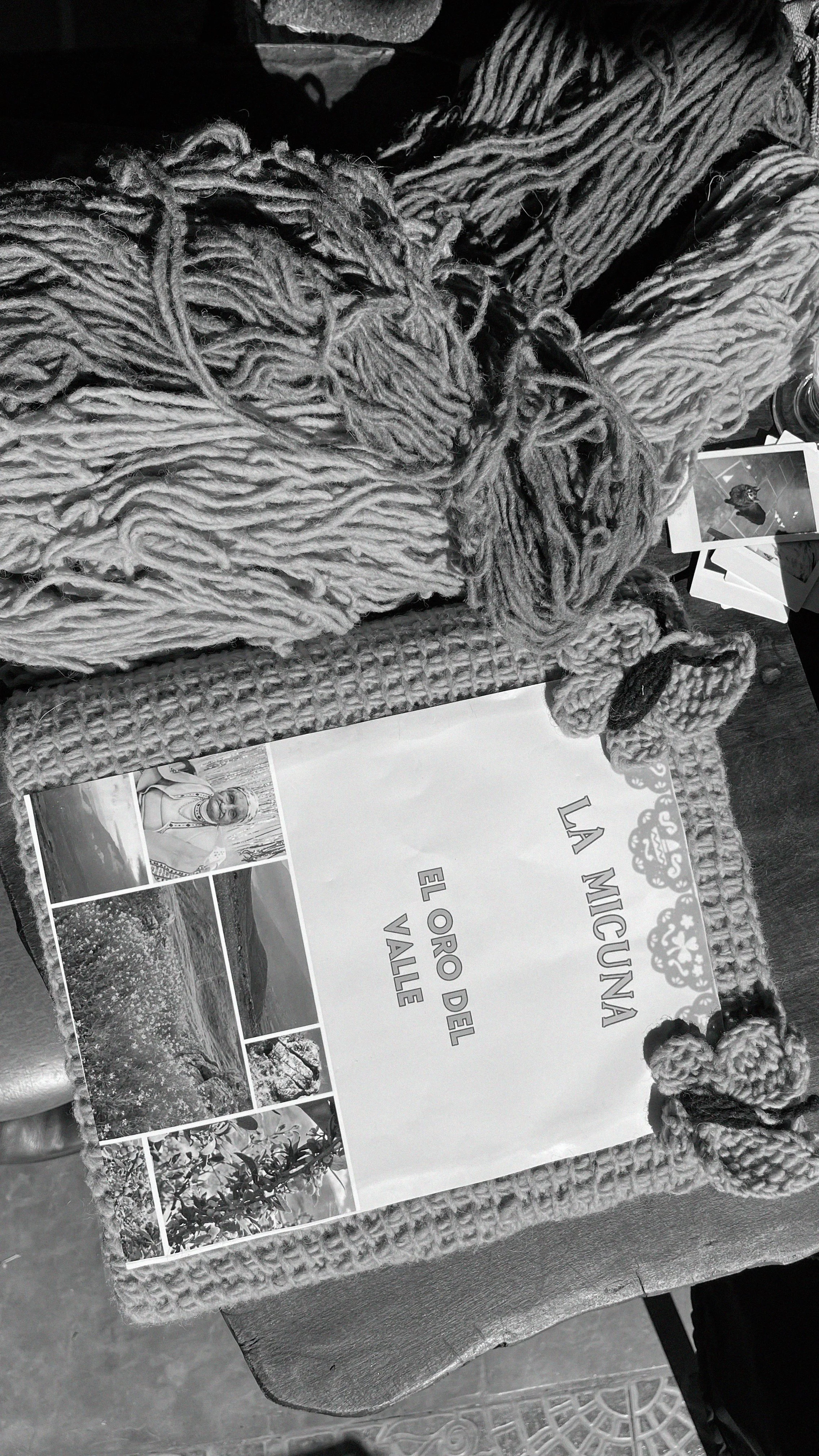
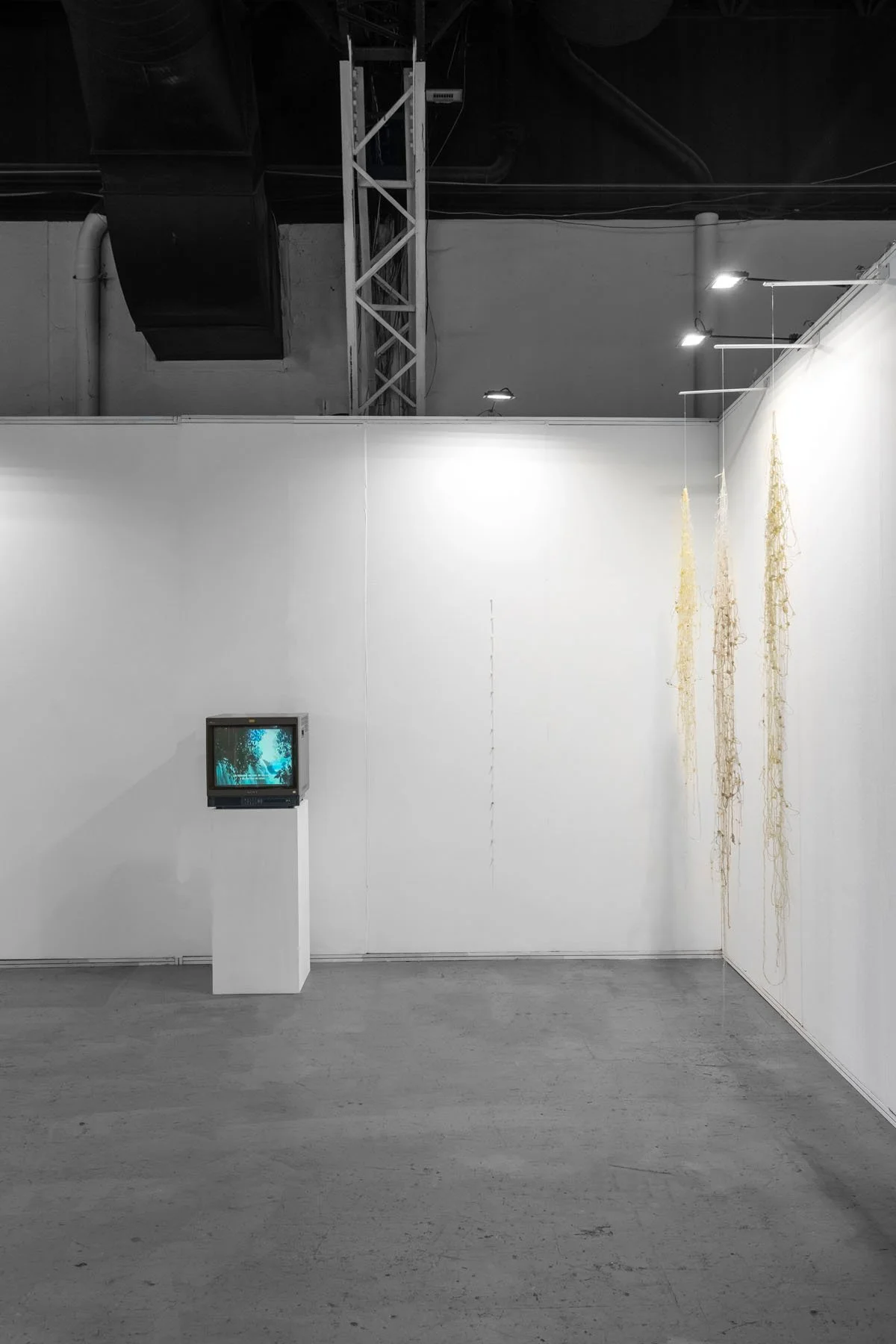
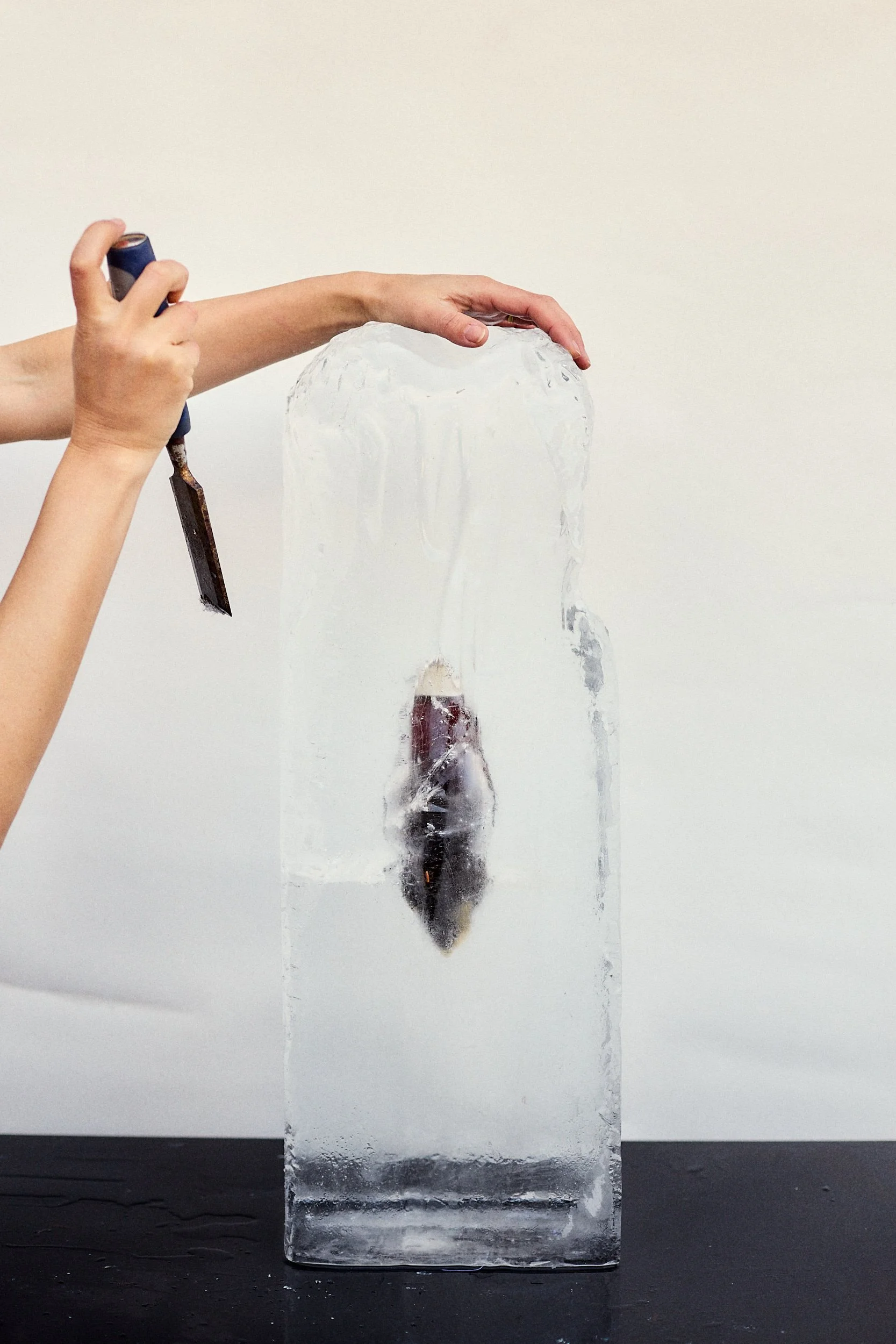
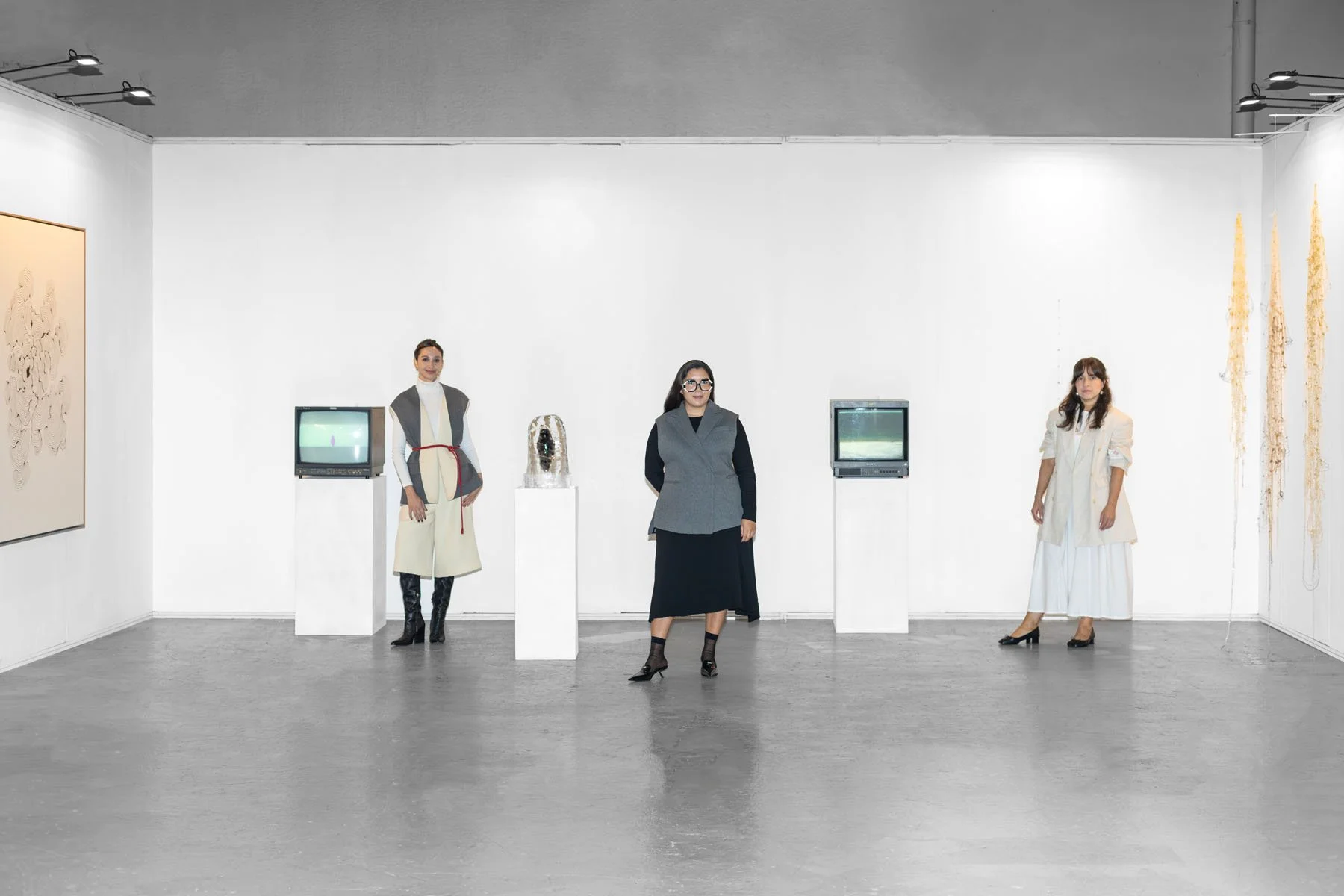

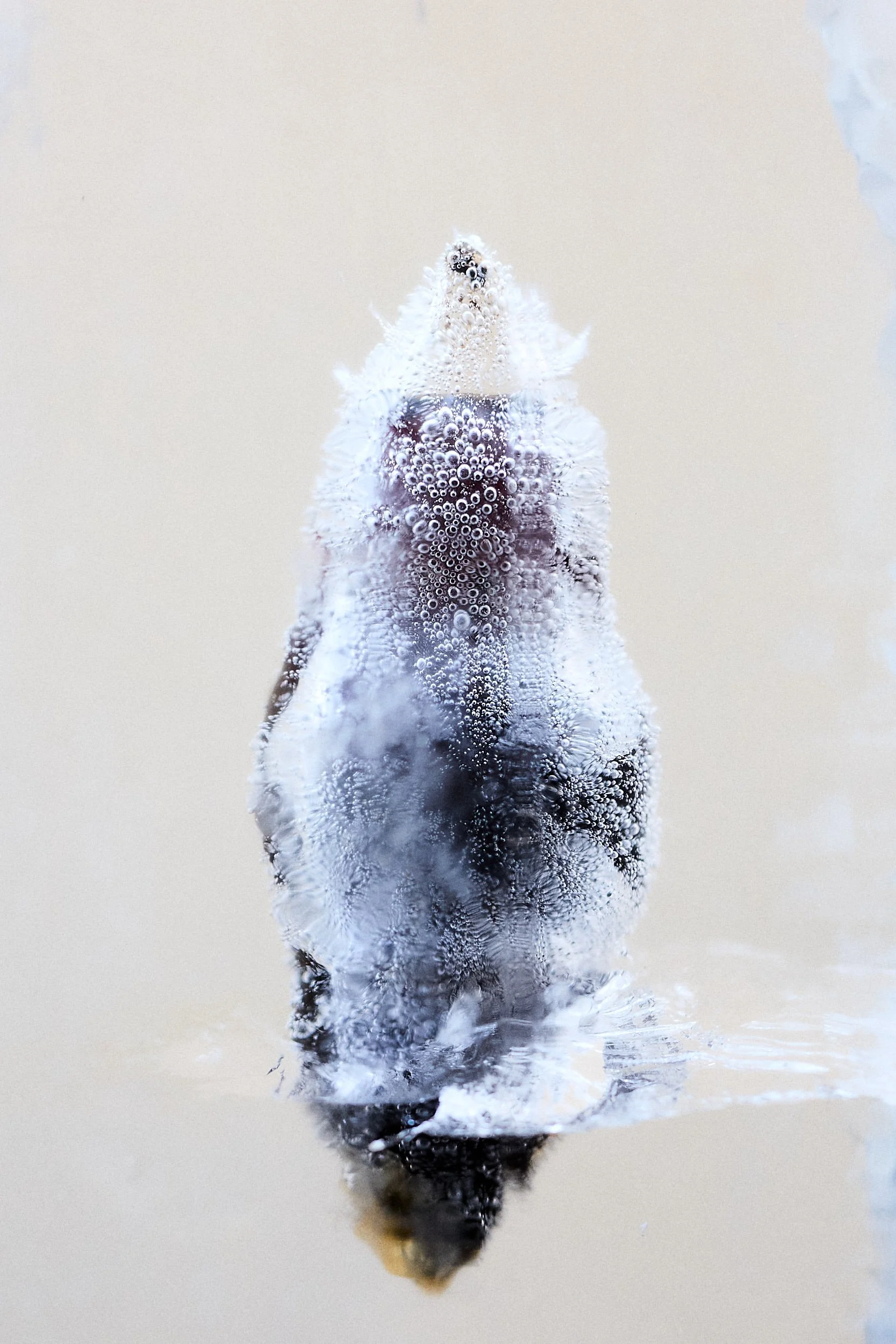
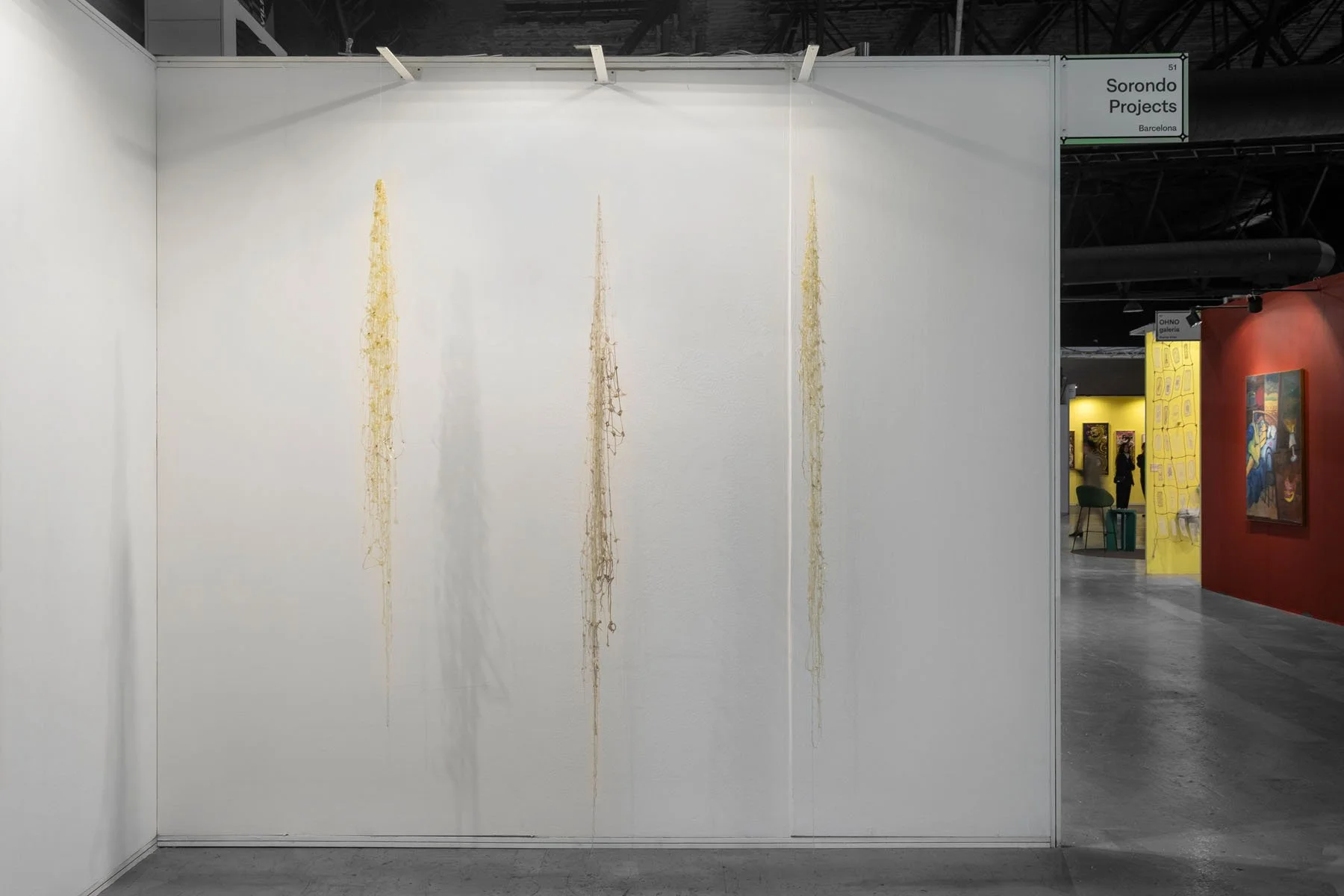
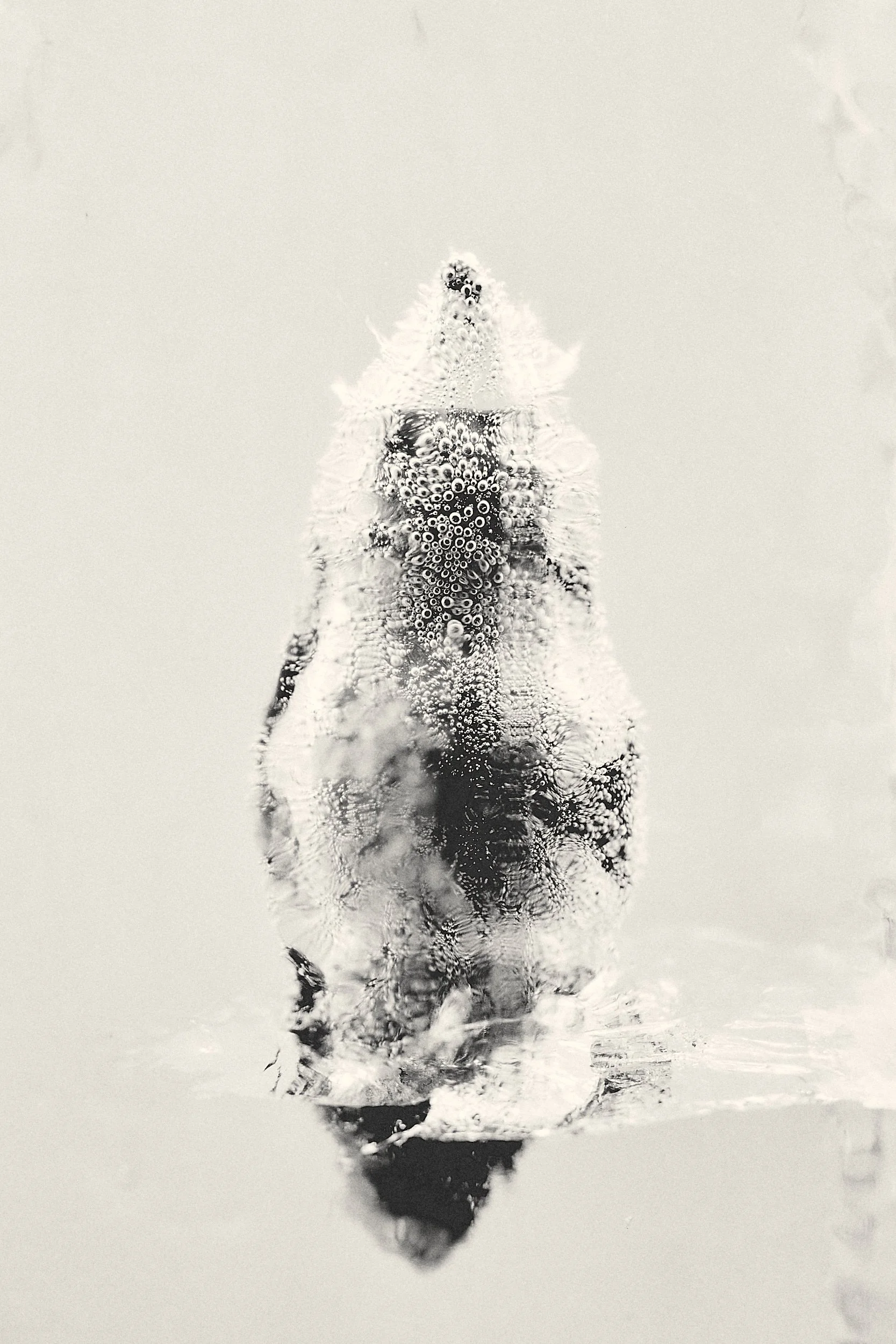
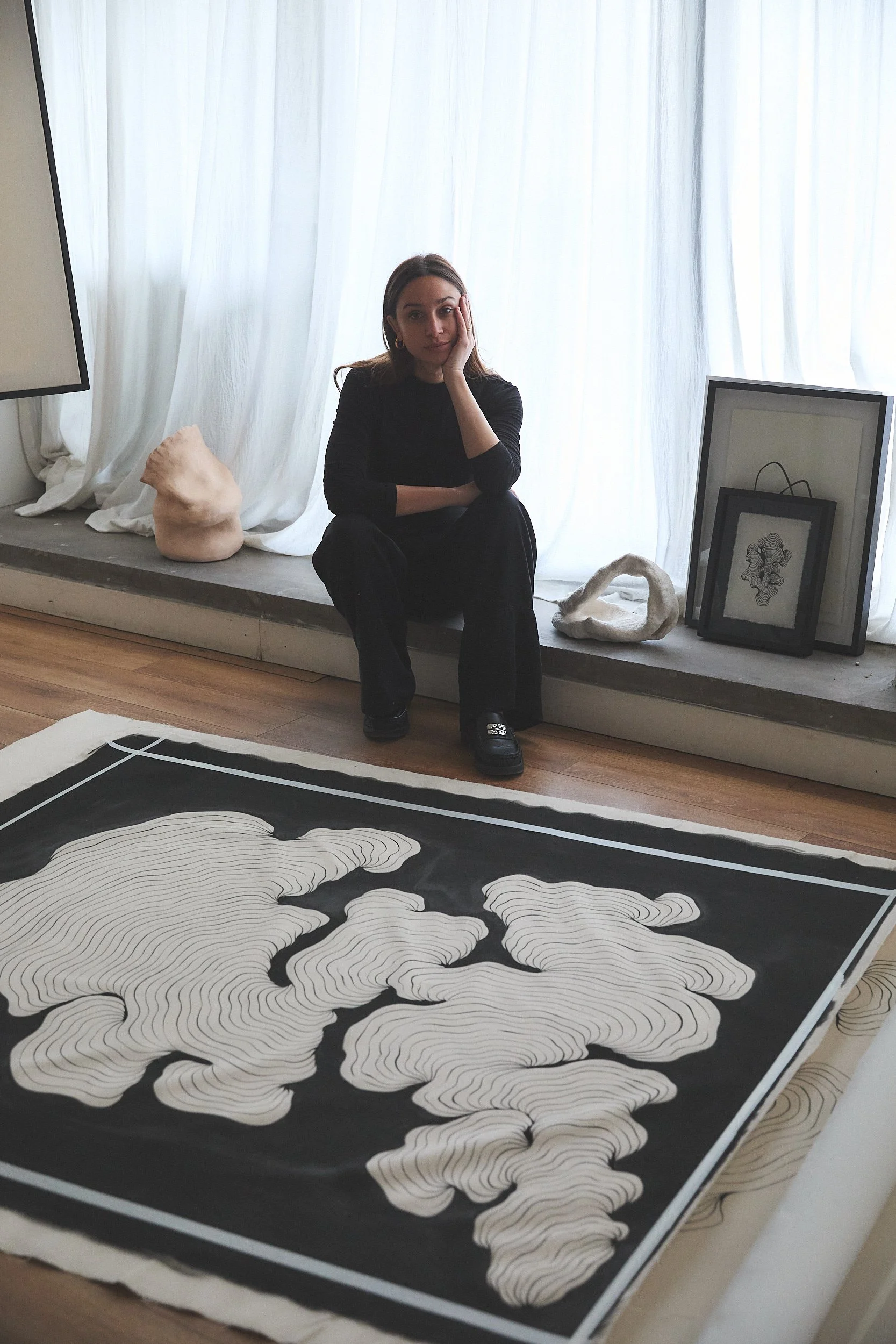
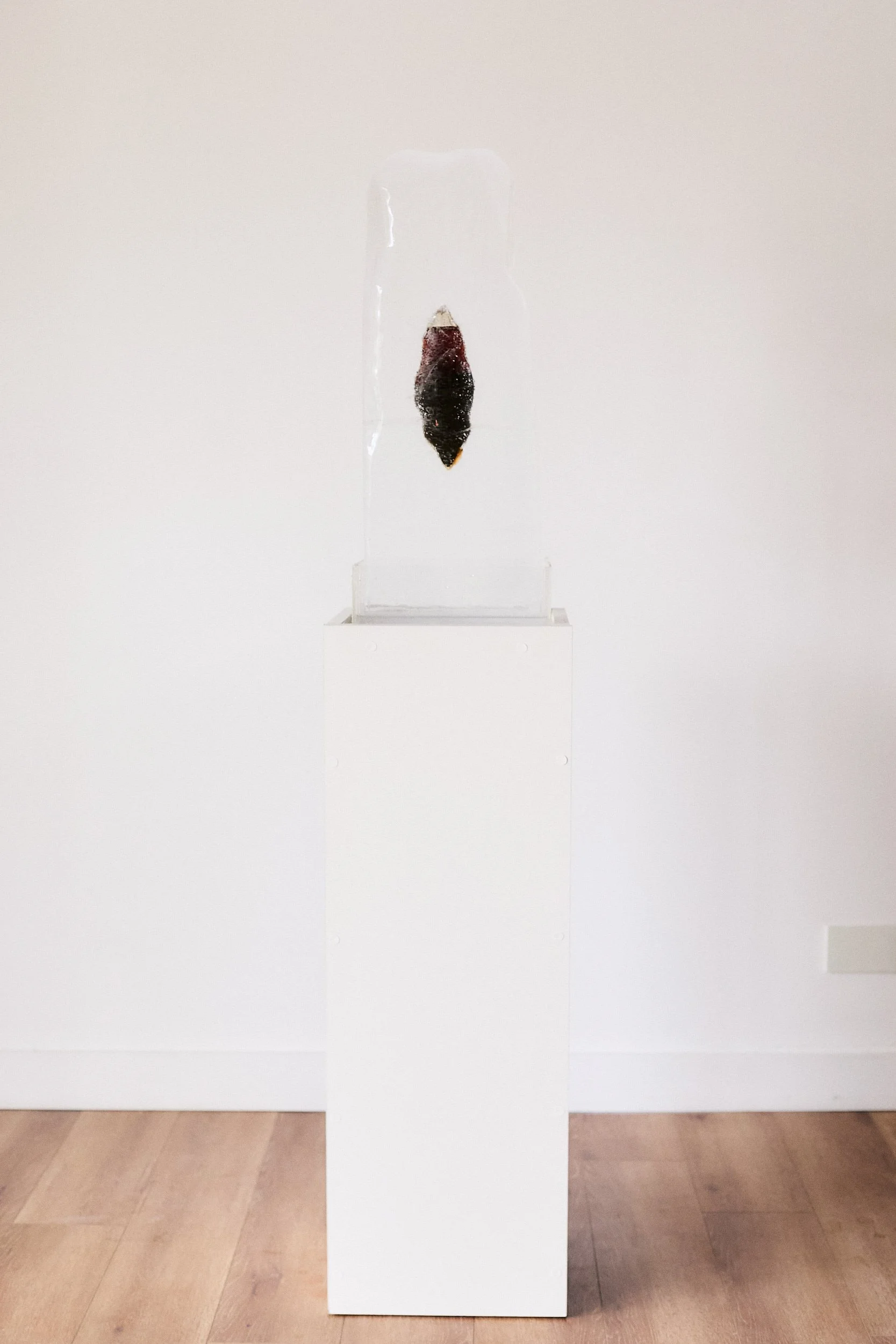
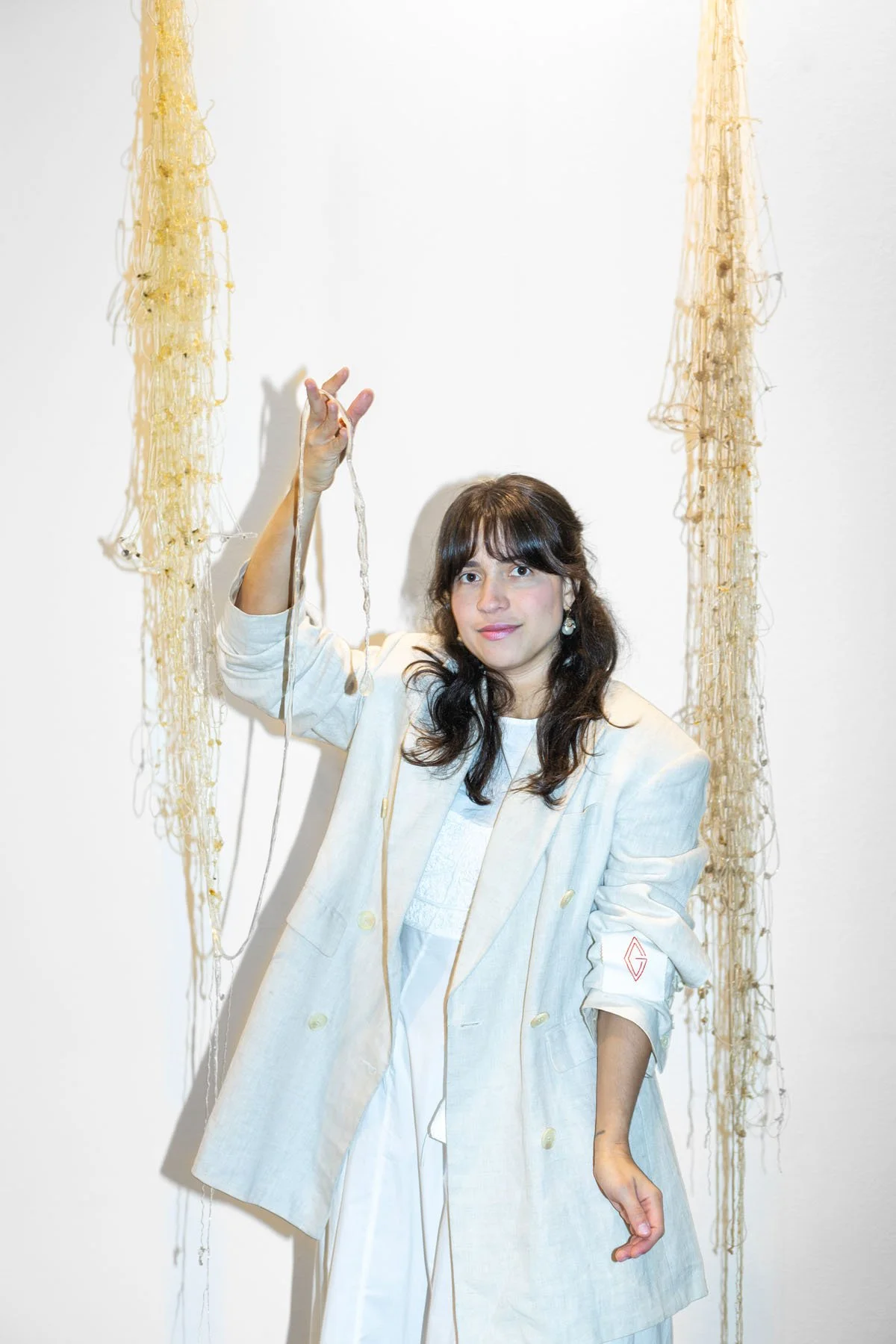
El núcleo de lo múltiple - Antonela aiassa
Antonela Aiassa (Buenos Aires 1988) presents El núcleo de lo múltiple an installation about transformation identity and matter in transit. A block of ice encases a core of natural pigment extracted in collaboration with an artisan who has spent years working with ancestral dyes in the region of Tafí del Valle in Tucumán Argentina. This relationship has allowed Aiassa to develop an ethical and sustained connection with the pictorial resources of her work.
As the ice melts the suspended pigment is slowly released creating organic unpredictable and ephemeral forms. As if memory itself emerged drop by drop.
Inspired by Taoist philosophy the liquid modernity of Zygmunt Bauman and the idea of identity as a project proposed by Anthony Giddens Aiassa turns time into ephemeral matter. The ice speaks of the transitory the pigment of the essential. Both materials come from landscapes with which the artist has no direct link but a symbolic one. These are internal landscapes projected onto real matter.
The installation is composed of three elements. A painting on natural cotton dyed with organic pigments that evokes an expanded droplet. The ice sculpture with the pigment at its core. And a video that documents the act of melting allowing the work to be experienced even after its transformation.
Aiassa does not seek to preserve her work but to allow it to shift. Like mourning like identity like water. Her question is not who am I but rather what am I remembering what am I letting go what am I becoming now.
Tejiendo la Anemoia - María elena pombo
Anemoia:
[noun, neologism]
A term coined to describe a sense of nostalgia for a time or place one has never experienced.
———
Tejiendo la Anemoia is a series of sculptures made from samples of Earth matter collected in Venezuela by María Elena Pombo in 2023, during her first return home after an eight-year absence.
The series explores her encounters with territories she had never previously visited, but that nonetheless lived in her imagination. Icons of Venezuela that shaped her sense of belonging despite physical distance.
For arteBA, Pombo will present three sculptures made from water and arenisca (sandstone) collected at Canaima National Park in southeastern Venezuela. A UNESCO World Heritage Site, the park is part of the ancient Guiana Shield and is renowned for its flat-topped tepuyes and dramatic waterfalls. The samples were gathered during Pombo’s visit to the territory, conducted in dialogue with Pemón guides and community members.
These materials will be transformed into yarn by pulling from molecular gastronomy recipes that have been appropriated by the bio-textile world to make plastics from algae. Pombo reappropriates these recipes as a way to summon the Venezuelan territory she no longer inhabits. Transformation itself becomes a method of re-connection. These yarns will be woven into three distinct sculptures, each shaped by the material and the landscape from which it was sourced.
The series is a conceptual counterpart to Pombo’s earlier series, Tejiendo la Morriña, which centers territories she explored intimately while growing up in Venezuela. While Morriña is grounded in recollection, an embodied memory, Tejiendo la Anemoia engages projection, a constructed memory. Both series explore Venezuelans’ connection to their country’s nature and the nostalgia, real or imagined, experienced by those who no longer inhabit it.
Tejiendo el Kerepakupai Merú uses water collected at the foot of Kerepakupai Merú, the world’s tallest waterfall, otherwise known as Salto Ángel, which flows from the top of the Auyán-tepui. The name, in the Pemón language, means “waterfall of the deepest place.”
Tejiendo el Auyán-tepui et al Uses arenisca from Auyán-tepui and neighboring tepuyes, two-billion-year-old geological plateaus unique to the Guiana Shield. For millions of years, wind and water have eroded these tepuyes, shedding into pink sand that now lines the rivers and shores below, such as Laguna de Canaima and the foot of Kerepakupai Merú, where the arenisca samples were gathered.
Tejiendo la Laguna uses water collected at the Laguna de Canaima, a lagoon where rivers converge and feed into the lagoon through falls such as Hacha, Golondrina, and Ucaima.